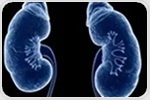| |  A recent study published in the journal Scientific Reports assessed the associations between the change in total cholesterol (TC) levels after type 2 diabetes (T2D) diagnosis (relative to pre-diagnosis levels) and the risk of cardiovascular disease (CVD). A recent study published in the journal Scientific Reports assessed the associations between the change in total cholesterol (TC) levels after type 2 diabetes (T2D) diagnosis (relative to pre-diagnosis levels) and the risk of cardiovascular disease (CVD). | |
|
| |  Research highlights the association between gout and neurodegenerative diseases, revealing that gout patients exhibit smaller brain volumes, increased brain iron markers, and a higher incidence of conditions such as dementia, Parkinson's disease, and essential tremor, particularly within the first three years after diagnosis. Research highlights the association between gout and neurodegenerative diseases, revealing that gout patients exhibit smaller brain volumes, increased brain iron markers, and a higher incidence of conditions such as dementia, Parkinson's disease, and essential tremor, particularly within the first three years after diagnosis. | |
|
| |  Hospital inpatients who develop an acute kidney injury (AKI) generally fare poorly after being discharged, and have few options for effective treatment. Hospital inpatients who develop an acute kidney injury (AKI) generally fare poorly after being discharged, and have few options for effective treatment. | |
|
| |  Pancreatic cancer is the seventh leading cause of cancer death worldwide and despite the increasing incidence of this disease, effective treatments are lacking and prognosis for patients with this tumor type remains poor, with approximately 70% of patients dying within one year of diagnosis. Pancreatic cancer is the seventh leading cause of cancer death worldwide and despite the increasing incidence of this disease, effective treatments are lacking and prognosis for patients with this tumor type remains poor, with approximately 70% of patients dying within one year of diagnosis. | |
|
| |  Menstrual migraine, a specific type of migraine affecting women, leads to significant disability and impacts the quality of life during reproductive stages. Understanding its prevalence and impact is crucial for effective management. Menstrual migraine, a specific type of migraine affecting women, leads to significant disability and impacts the quality of life during reproductive stages. Understanding its prevalence and impact is crucial for effective management. | |
|
| |  The gene ECHS1 encodes for enoyl-CoA hydratase short-chain 1, a mitochondrial enzyme involved in branched-chain amino acid and fatty acid metabolism. The gene ECHS1 encodes for enoyl-CoA hydratase short-chain 1, a mitochondrial enzyme involved in branched-chain amino acid and fatty acid metabolism. | |
|
| |  According to an accepted manuscript published in ARRS' own American Journal of Roentgenology (AJR), deep learning–based computer-aided diagnosis (CAD) for breast lesion classification on ultrasound significantly improved radiologists' diagnostic performance-;particularly for reducing the frequency of benign breast biopsies. According to an accepted manuscript published in ARRS' own American Journal of Roentgenology (AJR), deep learning–based computer-aided diagnosis (CAD) for breast lesion classification on ultrasound significantly improved radiologists' diagnostic performance-;particularly for reducing the frequency of benign breast biopsies. | |